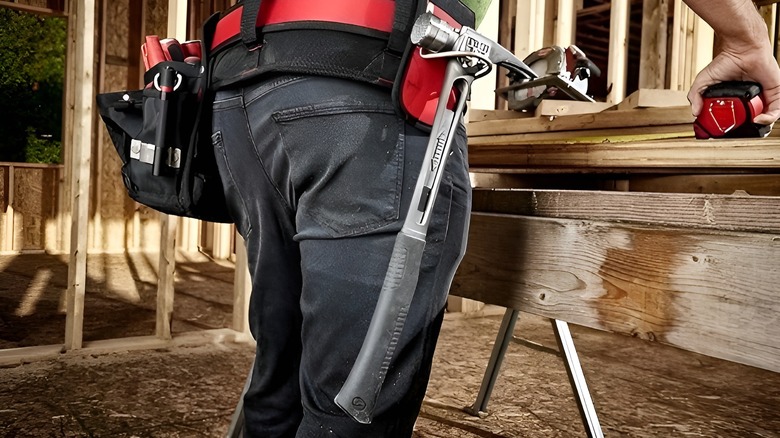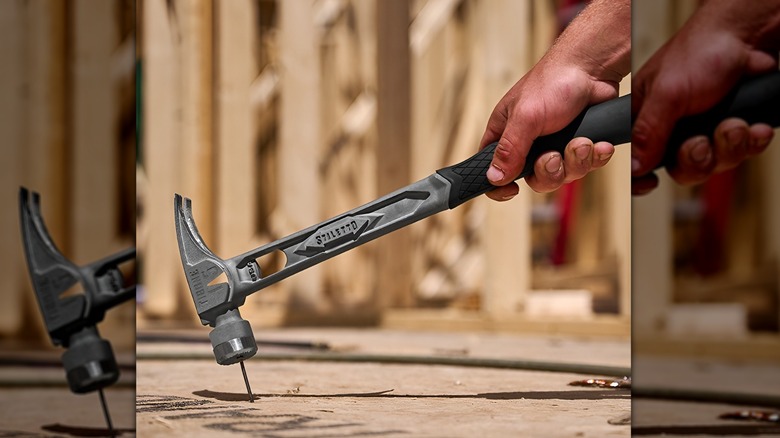Why Are Stiletto Hammers So Expensive & What Makes Them So Special?
We may receive a commission on purchases made from links.
To the novice tool user, the differences between hammer types may not be all that apparent. That is, until you come across one with an unusually gargantuan price tag alongside the more economical options. If this sounds like a scenario you've experienced, then it likely means that you've stumbled across your first-ever Stiletto hammer.
At first glance, hammers from the Wisconsin-based tool manufacturer don't look significantly different from any other tool of its type. What sets Stilettos apart from most traditional hammers isn't their design so much as their construction and materiality. While most cheaper hammers are made out of steel, Stilettos are fashioned entirely out of titanium. While this gives them a number of advantages over steel hammers — which we'll dive into later — the major downside is that they come at a far higher price.
This is due to the material cost of titanium, which can be up to five times more expensive than steel, and the more elaborate steps required during the production process. Stiletto hammers are also produced in the United States, which makes sense considering its parent company, Milwaukee, is among the tool brands that have kept its production stateside. With all this in consideration, it becomes easy to see why these hammers go for such a pretty penny, with some of their selection exceeding $400 at The Home Depot. So if they're so pricey, why would anyone want one?
Titanium hammers have distinct advantages over their steel counterparts
The cost of a Stiletto hammer may be enough to deter you from buying one, especially when cheaper steel hammers are available in the same aisle. And while hammers are among the tools that most can purchase cheaply without much consequence, there's a good reason why you may want to seriously consider a titanium one.
Anyone who uses hammers regularly knows just how brutal they can be on the hands they can get after a prolonged period. This is due to the vibrations brought about by rapidly swinging the hammer, which can be the root of harmful ailments such as carpal tunnel syndrome. This is where the titanium build of Stiletto hammers becomes advantageous. Weighing 45% less than steel hammers on average allows Stilettos to be easier on the hands. A vast majority of the energy exerted by a swinging titanium hammer will go into the nail, making it more efficient compared to steel, where more energy recoils back to the user.
Stilettos come with plenty of other perks, such as interchangeable heads and handles, the latter of which sport an ergonomically conscious design. That's not to say that steel hammers are bad, as they generally possess better knockdown capabilities due to their heavier construction. However, if you find yourself using hammers regularly, investing in a Stiletto is a wise idea that will benefit you in the long run.

